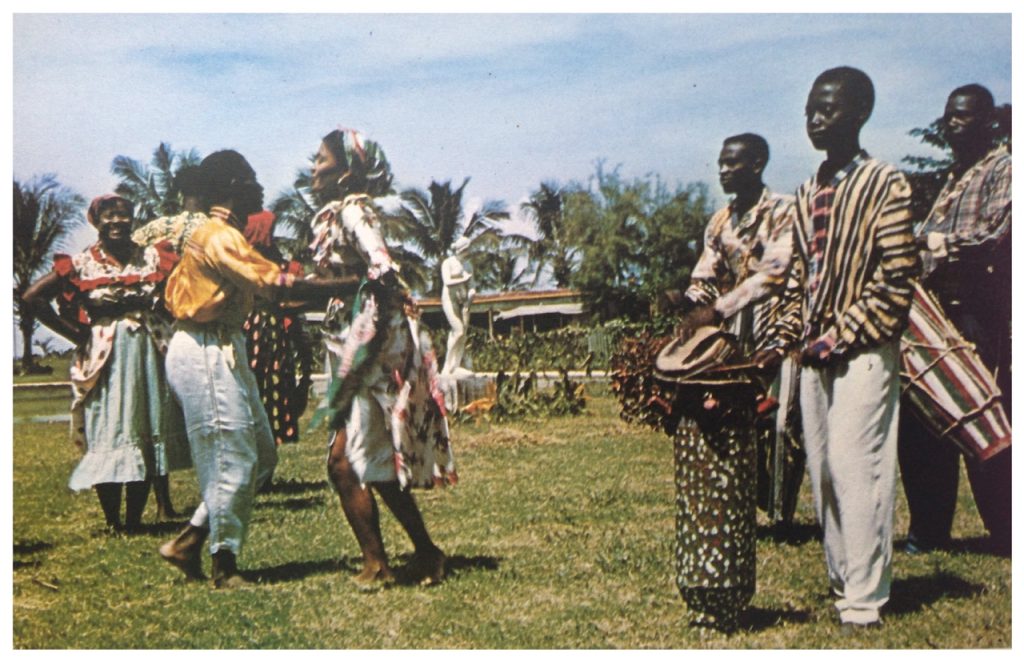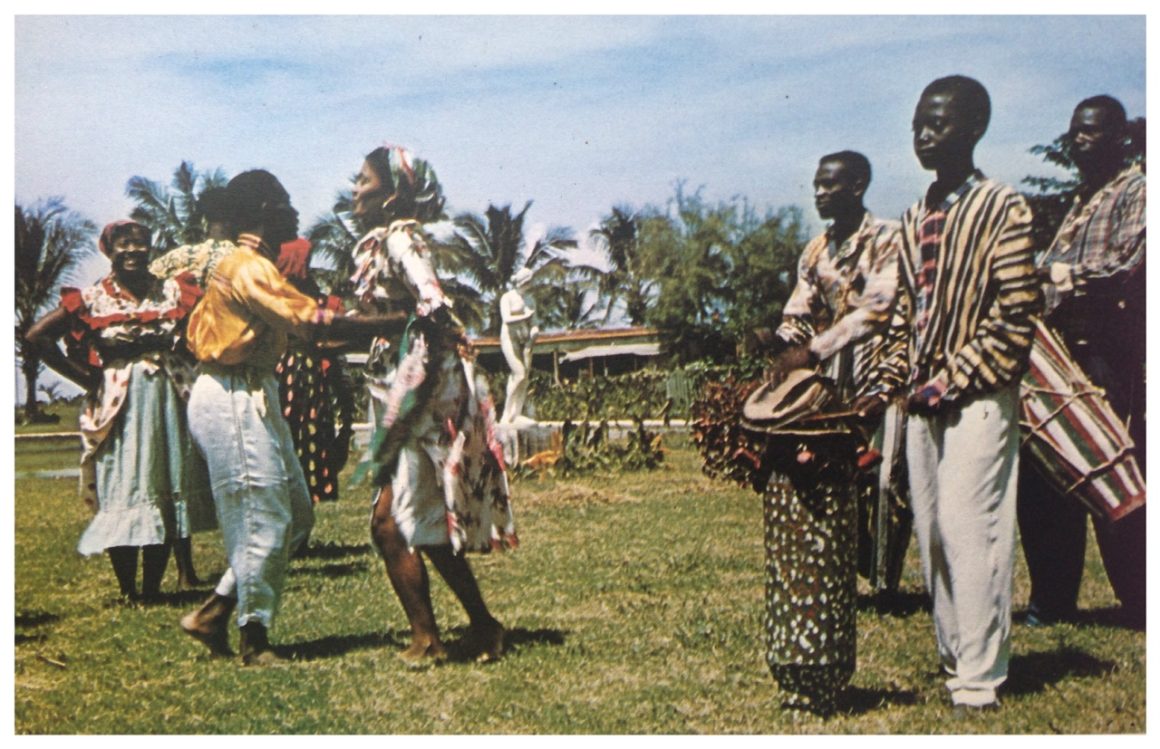
Haitian Kontredans, often considered one of the most significant cultural expressions in the history of Haitian folk dance, holds a unique place in Haiti’s rich tradition of music and movement. A dance that originated in the late 18th century and flourished in the 19th century, Kontredans blends elements of French ballroom style with Afro-Caribbean rhythms and traditions. Over time, it became a staple of social gatherings, offering a fun, energetic, and communal way for Haitians to enjoy music and celebrate their heritage.
Origins and Establishment
The term Kontredans derives from the French word contredanse, meaning “counter-dance,” which was a type of European ballroom dance popular during the 18th and early 19th centuries. French planters and their enslaved Africans brought The dance to Haiti during the colonial period. However, as with many aspects of Haitian culture, the enslaved population quickly adapted and reinterpreted this European tradition, blending it with their own African customs, rhythms, and styles. The fusion of these influences gave rise to a distinctive Haitian version of the contredanse, which became known as the Haitian Kontredans.
The dance reached its peak of popularity in Haiti during the 1800s, especially during the time of the Kingdom of Haiti, under King Henri Christophe, and later under the leadership of President Jean-Pierre Boyer. By this time, the Kontredans was not just an elite pastime but had become a cultural activity embraced by all levels of society, from rural peasants to urban elites.
The Music and Dance of Kontredans
Musically, the Haitian Kontredans blend bèlè rhythms from the African diaspora with more structured European dance music. Instruments commonly used in Kontredans performances included the violon (violin), guitare (guitar), tambour (drum), and the flûte (flute), with occasional use of the maracas and triangle. The melodies typically involved syncopated rhythms, a hallmark of African musical traditions. The music had a lively, bouncy tempo, and it encouraged participation, with dancers performing intricate, sometimes acrobatic, steps in pairs or larger groups.
The dance itself was characterized by rapid footwork, graceful yet energetic movements, and complex steps that involved a lot of coordinated partnering. The dance structure was organized in a sequence of repeated patterns, with dancers often changing partners throughout the performance. These dynamic movements were designed not just for beauty, but for community engagement—everyone in the dance circle was expected to be part of the action. It was not just about the individual dancer, but rather the collective energy of the group.
The Dance’s Role in Haitian Social Life
Kontredans was not merely an artistic form of expression; it played a critical social role. In both urban and rural areas, the dance became a form of communal bonding, where people from various backgrounds could come together in a shared space. The dance was featured prominently at festivals, weddings, and social gatherings, often accompanied by live music and laughter. For many Haitians, Kontredans represented the joy of coming together as a community, and it played a crucial part in social cohesion.
A Connection to Haitian Voodoo?
While the Haitian Kontredans were not directly tied to Voodoo rituals in the same way that other Haitian folk dances such as Rara or Ibo dances were, they did share certain Afro-Caribbean elements that echoed the spiritual and ritualistic traditions of the African diaspora in Haiti. The rhythm and movement of the dance, like many traditional Haitian dances, were deeply connected to the collective energy of the community, and they were seen as a form of self-expression that allowed people to connect with both their ancestral heritage and their surroundings.
However, unlike dances directly associated with Voodoo ceremonies (such as the Yanvalou or Koupé), which often have specific spiritual or religious meanings, the Kontredans was primarily a social and celebratory dance. Nevertheless, the communal aspect of the dance, the focus on rhythm, and the joyful, collective participation can be seen as reflective of the broader spiritual and cultural ethos that permeated Haitian society, which was deeply influenced by African traditions and the practice of Voodoo.
Decline and Loss in Modern Haitian Society
By the early 20th century, as Haitian society underwent dramatic social and cultural changes, the popularity of Kontredans began to wane. The rise of other musical and dance genres, particularly compas (a genre of Haitian dance music) and meringue, eclipsed the older folk traditions. The influence of European colonialism, the spread of Western culture, and the appeal of modernized, urban dance styles all contributed to the fading of the Kontredans as a dominant social dance in Haiti.
Today, Kontredans is considered a lost art, with few practitioners left who can remember or perform its intricate steps and rhythms. The modern Haitian dance scene, while vibrant and diverse, tends to be dominated by newer musical styles such as Konpa and zouk, which have become popular not only in Haiti but across the Caribbean and the African diaspora.
However, interest in the dance has not disappeared entirely. A small but dedicated group of folklorists, dancers, and musicians continue to study and revive Haitian traditional dances, including Kontredans, as part of efforts to preserve and promote Haiti’s cultural heritage. Cultural festivals, both in Haiti and abroad, occasionally feature performances of Kontredans as a way of reconnecting with this lost tradition.
Influence on Other Countries and Islands
Though the Haitian Kontredans was a distinct Haitian development, it influenced other parts of the Caribbean, particularly in French-speaking islands such as Guadeloupe, Martinique, and Saint Lucia, as well as in parts of the Dominican Republic. These countries and territories, with their shared colonial histories, saw the introduction of similar forms of contredanse, though each island put its own spin on the dance, blending it with local music and culture.
In particular, the French Caribbean islands, with their similar historical background and European-African musical fusion, adopted variations of the Kontredans. Over time, these variations evolved into different forms of social dances that remain part of popular culture today. In the Dominican Republic, the influence of Haitian music and dance, including Kontredans, can be seen in the rhythmic patterns of the country’s merengue and bachata.
Haiti’s Rich Cultural Heritage
The Haitian Kontredans stand as an emblem of Haiti’s rich cultural heritage, reflecting the resilience and creativity of a people who, even under colonial oppression, found ways to adapt and create something uniquely their own. Though it may no longer be a staple of modern Haitian life, the legacy of Kontredans continues to echo through the rhythms and dances of the Haitian people. It is a reminder of the vital role that music and dance play in both preserving and celebrating cultural identity, and it remains an important part of Haiti’s folklore, deserving of attention and revival for future generations to appreciate and enjoy.


